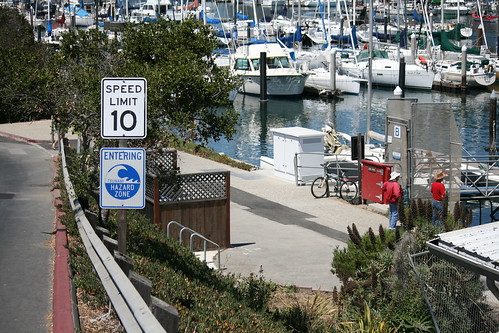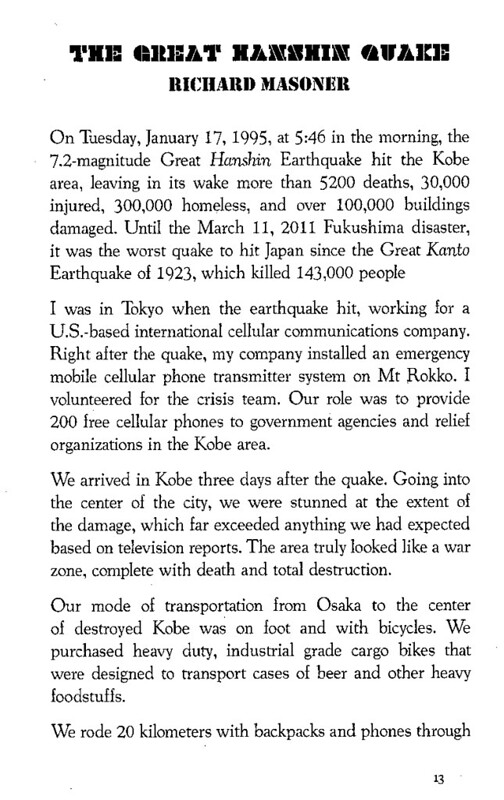With the extreme loss of life and record breaking devastation created by Typhoon Haiyan in the Philippines, the record-holding Typhoon Tip in 1979 becomes a historical footnote.
Typhoon Tip
Typhoon Tip was the largest and most intense tropical cyclone ever recorded. With a diameter of 1,380 miles / 2,220 kilometer, it was almost equivalent to the continental United States in area. Standard atmospheric pressure is 1013.25 millibars or 29.92 inches of mercury. U.S. Air Force weather reconnaissance aircraft measured a worldwide record low sea level pressure of 870 millibars or 25.69 inches. That’s more than enough to make your ears pop and is equivalent to the air pressure at over 4,000 feet above sea level, where the boiling point of water is only 204°F / 96°C and you’re supposed to use the high altitude cooking directions on your box of Betty Crocker red velvet cake mix. Wind speeds exceeded 190 MPH over the ocean.
When Tip made landfall in southern Japan on October 19, the former super typhoon had weakened to Category 1 strength with 80+ MPH sustained winds. The wind, storm surges and heavy rainfall from Tip resulted in millions of dollars in damage and the loss of nearly 100 lives.
And as a 13 year old kid living in a western suburb of Tokyo, I rode my BMX bike during this record breaking storm.
It was mostly like riding through a heavy thunderstorm, though things got really intense when the wind gusted to 100 MPH. I just went around the block. I mostly just remember leaves whipping by, but when a large tree limb flew nearby, I decided to end my attempt to claim a Darwin Award and go back indoors. That was my first and last experience with biking during a large cyclone.
Tip killed nearly 100 people as it roared across Japan. On this Veterans Day, I’d be remiss not to remember the 13 U.S. Marines who lost their lives on a training exercise during this storm. The men nailed the doors to their barracks shut to prevent them from flying away during the storm. I’m sure it seemed like a good idea at the time, but flooding damaged a set of fuel storage bladders and a surrounding retaining wall. When 5,000 gallons of gasoline gushing from the bladders flowed downhill into the barracks into a space heater, the resulting inferno destroyed the barracks, killed 13 individuals and injured another 68 people.
Typhoon Haiyan
The U.S. Air Force ceased weather reconnaissance out of Anderson Air Base, Guam in 1987, so we really don’t know if Typhoon Haiyan has set any new intensity or wind records. NOAA estimates pressures as low as 858 mbar for Haiyan, though we’ll never know if Haiyan exceeded Tip without direct observation.
We do know Haiyan set new records for windspeed at landfall. Wind speeds exceeding 190 MPH when Haiyan slammed into the city of Guiuan would classify this super typhoon as a F3 tornado on the Fujita scale, if Haiyan were a tornado. F3 tornados are capable of lifting heavy cars, lifting roofs from well constructed homes, overturning trains, and uprooting forests.
With fatality estimates ranging to 10,000 and $14B in total economic damage, Typhoon Haiyan is no joke. This is the most expensive natural disaster in Filipino history. The previous two most expensive natural disasters — $1.7B from Typhoon Bopha in December 2012 and $2.2B caused by Typhoon Trami just three months ago — both occurred within the last year.
This is not a “bicycle are the cockroaches of disaster” story, but this is a bicycle blog. Photojournalists have captured several people riding bikes in the aftermath of the storm. This man parks his bike inside of a damaged Catholic church in Tacloban. Another survivor rides his bicycle rickshaw on an unlit street covered in storm debris. These two guys share a ride on a bicycle built for one.
Haiyan has since weakened to Category 1 status but is still capable of significant damage as it crosses into Vietnam. This is the third large storm to hit Vietnam in the past six weeks.

